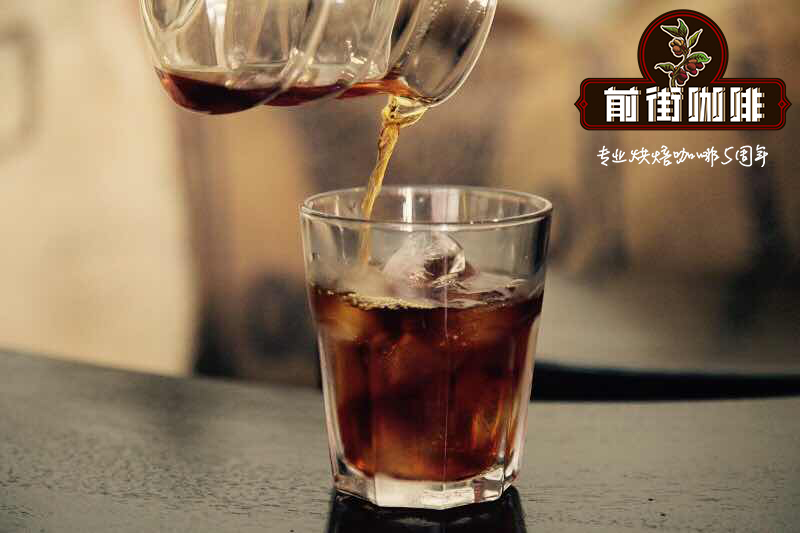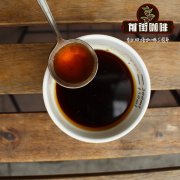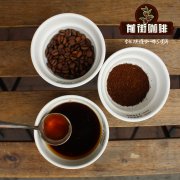Factors affecting espresso factors affecting espresso Seven elements of Coffee extraction

Professional coffee knowledge exchange more coffee bean information please follow the coffee workshop (Wechat official account cafe_style)
Temperature.
The temperature range of espresso is 195-205 °F (i.e. 90.5-96 °C). The general temperature guide is that for darker baking, the temperature is lower; for lighter baking, the temperature is higher. My personal range is 198-203 degrees Fahrenheit, and most of the extracts are between 199 and 201 degrees Fahrenheit.
pressure
9 bar is the normal maximum, but anywhere between 8 and 10 bar is fine. The pressure during brewing is determined by the grinding particle size. If the grinding is too rough, the pressure will be low. If you grind it too fine, you can drink the most at the 9-10 bar with almost no espresso. We set up the machine to provide up to 9 bars. Under the pressure of brewing, the more the better. More than 10 bars usually leads to excessive extraction of coffee.
Grinding
Grinding size is the most critical variable! The small change of grinding particle size will have a great influence on the extraction. If you haven't seen it, please take a look at my video dialing mill size.
Measure body weight
I always advise people to start by making double. Singles are cunning, and few people do so. In the traditional Italian style, double coffee uses 14 grams, but now few high-end cafes or household users use 14 grams. According to a survey by SCA, baristas now use an average of 19 grams of coffee to drink two cups. I'm usually between 17 and 19 grams. No matter what dose you decide to take, it's important to be consistent with your weight when you dial-in the size of the mill.
Distribution / compression (tamping)
Ground coffee should be evenly distributed in the filter basket, not caked. The coffee should be compacted (mashed) evenly. Don't worry about the old suggestion of 30 pounds of ramming power. Because it has become a thing, most people have begun to use finer grinding, which, in my opinion, does not require much effort to create a good coffee ball. Personally, I no longer use tampering. The classifier is responsible for distributing and compressing coffee. They are more consistent. In this video you can see how I use the level.
Shooting time
Regular shooting is the most basic way to let you know that you are in a reasonable extraction. In addition to timing, you can also use the wine-making ratio to know when to cut wine, as well as taste and visual cues such as "perm". For timing, you need 20-30 seconds, about 2 ounces / 60 milliliters from the first drop into your cup. It may be difficult to judge whether your coffee is made with a lot of cream! It can be reduced from 70 ml to 50 ml. Don't rush to time-this is the most basic. I have made good films for more than 35 seconds. Examples of different time points are: the Expobar E61 group has an additional pre-infusion chamber behind the shower screen, so it takes them a few more seconds to achieve full brewing pressure, and the vibrating pump machine is slower than the turntable.
END
Important Notice :
前街咖啡 FrontStreet Coffee has moved to new addredd:
FrontStreet Coffee Address: 315,Donghua East Road,GuangZhou
Tel:020 38364473
- Prev

What brand of coffee grinder is good? What brand of Italian grinder is good?
Eureka Mignon Silenzio, Specialita and Perfetto We have always thought of Eureka Mignon as a beautiful grinder that offers a compact product for home use. Now, all three of these new Mignon's have different coffees and
- Next

What is oatmeal milk? is oatmeal milk coffee good? oatmeal milk latte and regular latte
For more information about coffee beans, please follow the coffee workshop (Wechat official account cafe_style). To be honest, I often try Altley's original oatmeal-based drinks in the kitchen and find it an interesting choice. I hope the tasters will agree. They didn't. Oatmeal milk is a real champion in the preparation stage because it is steamed and steamed.
Related
- Beginners will see the "Coffee pull flower" guide!
- What is the difference between ice blog purified milk and ordinary milk coffee?
- Why is the Philippines the largest producer of crops in Liberia?
- For coffee extraction, should the fine powder be retained?
- How does extracted espresso fill pressed powder? How much strength does it take to press the powder?
- How to make jasmine cold extract coffee? Is the jasmine + latte good?
- Will this little toy really make the coffee taste better? How does Lily Drip affect coffee extraction?
- Will the action of slapping the filter cup also affect coffee extraction?
- What's the difference between powder-to-water ratio and powder-to-liquid ratio?
- What is the Ethiopian local species? What does it have to do with Heirloom native species?

